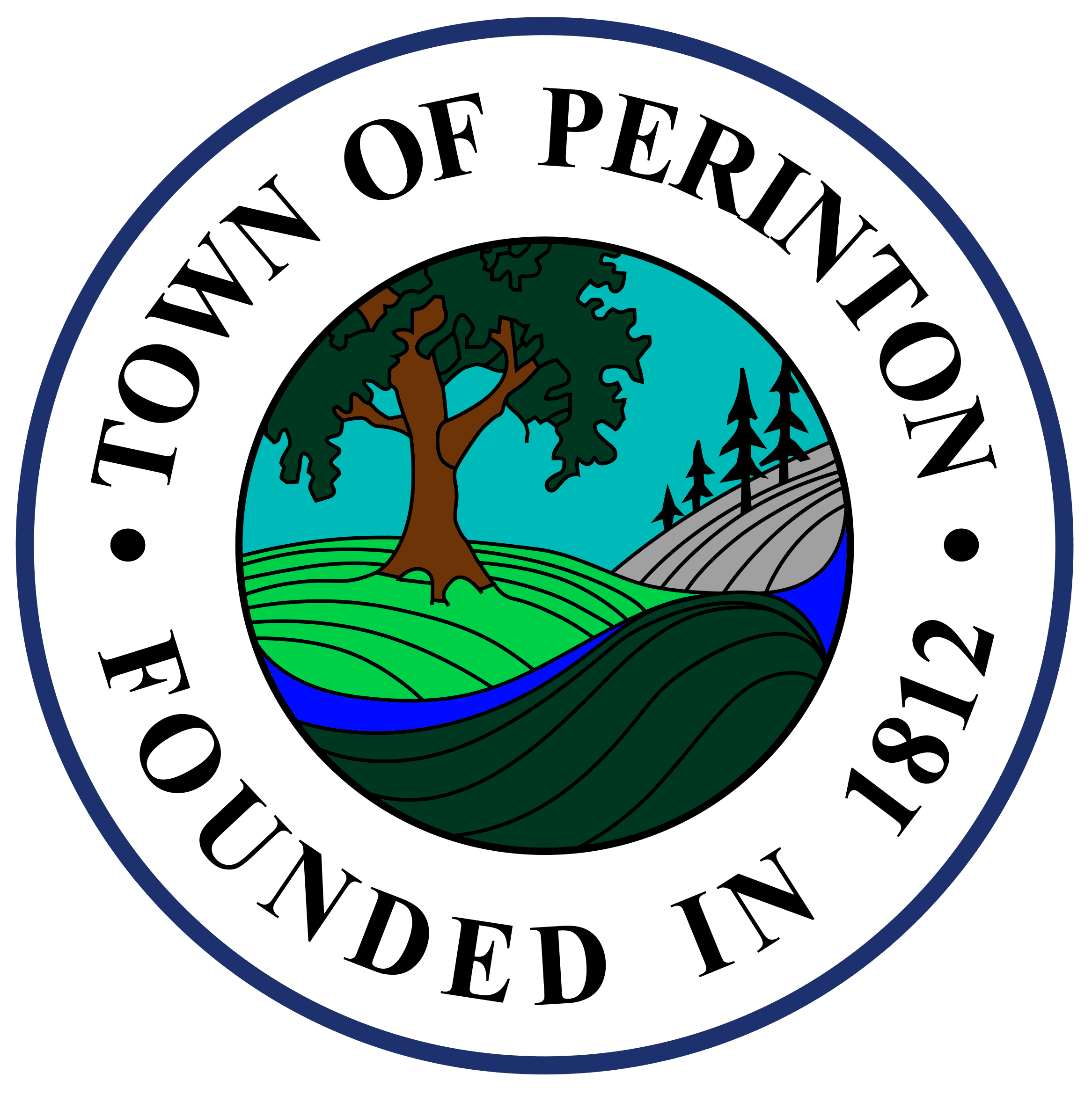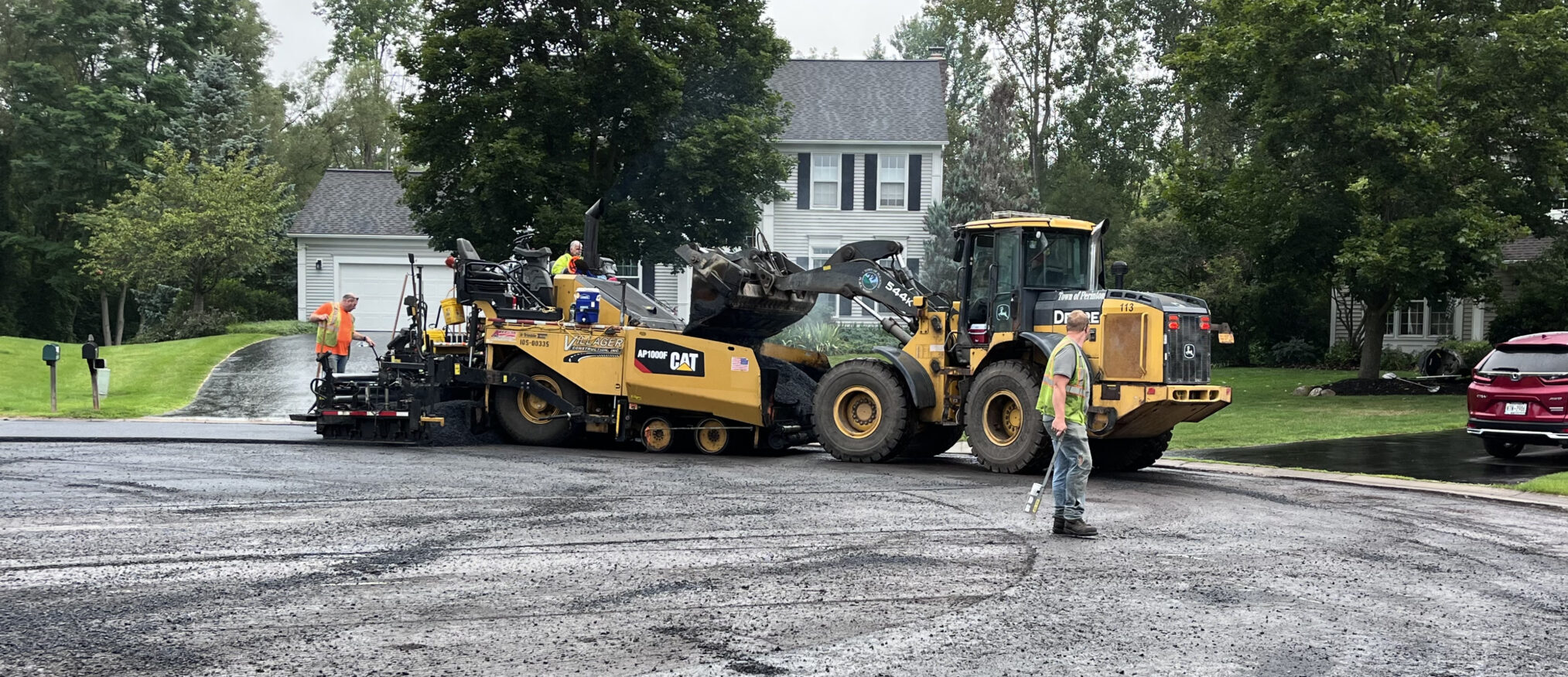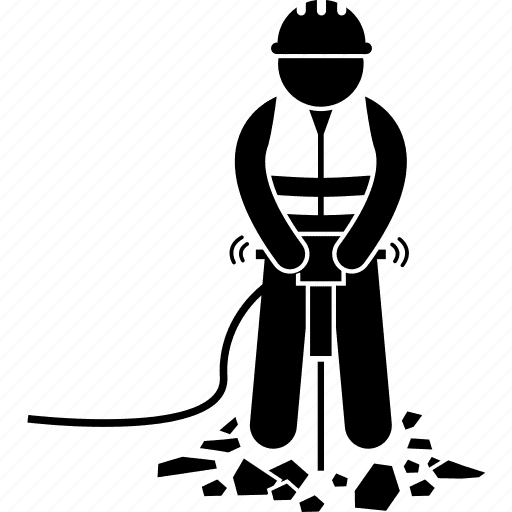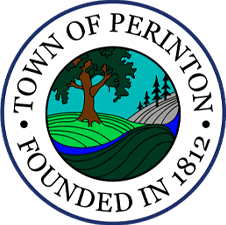The Perinton Highway Department is dedicated to keeping 326 lane miles of town roads in safe working condition through three different levels of maintenance: routine maintenance, preventative maintenance, and capital improvements. The timeframe and the level of maintenance each road receives is determined through a rating process utilizing best industry standards and technical guidance from the New York LTAP Center – Cornell Local Roads Program.
Routine maintenance is defined as the everyday maintenance of local Town Roads and Rights-of-Way. This generally includes, but is not limited to:
- Street sweeping
- Tree trimming on town land and Right of Ways
- Roadside pickup of litter
- Dead animal pickup
- Right of way mowing
- Road striping
- Roadside ditching
- Pothole patching
- Sign maintenance
- Drainage inlet repair
Preventative maintenance is defined as the process of treating the road surface to protect it from oxidation and water infiltration, which can lead to advanced roadway degradation. For the Town of Perinton, preventative maintenance includes:
Crack Filling:
- Crack filling involves applying hot liquid asphalt to cracks in the road to help prevent water from infiltrating into the road.
Surface Treatment:
- Surface treatments are generally applied to a road on a 7 to 10 year cycle. Surface treatments seal the road surface from water infiltrating into the base layers of the road, they add traction by applying a new wear surface, and extends to overall service life of the pavement for several years.
Each year the Town surface treats over 20-miles of Town roads using a surface treatment referred to as Chip Sealing. This is a cost-effective, durable and long-lasting protective coating over the top of the existing asphalt pavement. This process involves applying a layer of liquid asphalt to the road followed by a layer of stone aggregate, which is rolled into the fresh asphalt to create a new driving surface. After a few days, any loose stone is removed with street sweeping equipment.
Approximately 1 to 3 weeks after the chip seal process is complete, a secondary application known as “fog seal” is applied over the road. This treatment further seals the road, helps lock the stone in place, and creates an aesthetically pleasing finished product.
The Town makes every effort to minimize inconveniences to our residents; however, delays should be expected. Please note the Town ensures access for emergency vehicles. Investing in our local roads keeps them safe, functional and enhances our overall community. Please feel free to contact the DPW office at (585) 223-5115 with any questions or concerns regarding this information.
Capital improvements are defined as the rehabilitation of the entire road structure. This includes:
- Concrete gutter replacement
- Catch basin and storm pipe replacement
- Milling of the asphalt surface
- Asphalt recycling
- Asphalt paving
Roads that are scheduled for capital improvement level maintenance are typically 20 or more years old and have had numerous surface treatments applied to them. The Town’s Capital Improvement: Road Program generally involves the replacement of deteriorated and/or damaged drainage inlets and concrete gutters, milling (grinding) and removal of failing asphalt pavement and installation of new pavement. This process will improve the road to a near new condition. The following is a explanation of the rehabilitation process:
- Phase I – Repair Drainage Inlets – This phase entails the replacement of drainage inlets along the edge of the road as well as any additional drainage work that may be necessary.
- Phase II – Repair of Damaged Concrete Gutters: This phase includes the removal and replacement of deteriorated sections of concrete gutter. The replacement of gutters at the end of driveways requires removing and replacing a small section of the driveway apron. A clean edge is saw-cut and any disturbed asphalt is replaced with new pavement to ensure a professional and long-lasting repair. Any mailboxes in the work area will be removed and reinstalled and any lawn that has been disturbed will be restored with new topsoil and seed. This part of the project is overseen by the Town to ensure that it meets our high standards. The concrete should NOT be driven on for three (3) days, to ensure that it cures properly. Residents may have to make alternative parking arrangements. The Town’s contractor will notify affected residents of the pending driveway or parking impacts.
- Phase III – Road Milling: During this phase, several inches of existing asphalt pavement are milled and removed, with the remaining base pavement being spot-repaired. Manhole casting (frames and covers) will be adjusted as/if necessary to meet the new completed pavement height. Until the new pavement is installed, you may drive on the milled surface.
- Phase IV – Road Paving: In the final phase, Town staff installs new layer(s) of asphalt pavement on the road. Access to some driveways may be restricted up to 30 minutes while work occurs in the area. The Town will confirm the paving schedule with affected residents the day before work is to begin.
Contact Information
Email: Highway Department
David VanThof
Deputy Commissioner of Public Works – Highways
Business Hours: Monday – Friday 7:30am to 4:00pm
Phone: (585) 223-5115 / Fax: (585) 223-0448
After Hours Contact: (585) 425-7380




